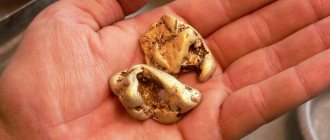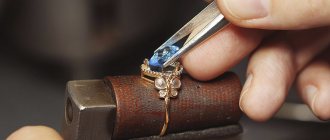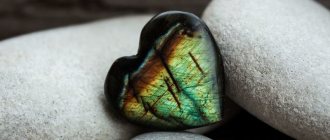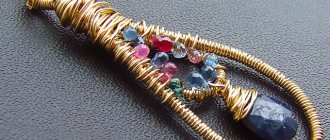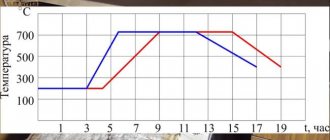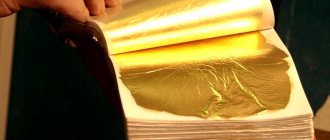Post updated: May 25, 2020
Gold leaf is the thinnest sheets of precious metal up to a fraction of a micron thick. This unusual material is used for gilding jewelry and other products, the production of which involves coating with tinsel. The sheets are made either of pure yellow metal or of its alloys with silver or copper. The physical properties of gold allow the minimum thickness of leaf plates to be achieved - pure metal is soft and malleable. The simplest example of objects covered with tinsel is the domes of churches, which for several centuries have traditionally been finished with sheets of the thinnest sheets of precious metal. How do modern craftsmen do gilding with gold leaf?
Production of tinsel
The softness and malleability of pure gold allows the metal to be rolled into very thin sheets. Thanks to these physical properties of the metal, the sheets are obtained without cracks and breaks, that is, they are not damaged during the manufacturing process. The process of producing gold sheets begins with the casting of a bar. An ingot with dimensions of 20x5x1 cm is cast from metal, and then carefully rolled into a strip. The length of such a strip can reach 30 meters.
How to continue working with gold leaf? The strip is cut into squares, which are folded together, separated by paper sheets. Before the tinsel can be used for gilding work, this book is sent under a hammer that works about two thousand blows. Under the blows of the instrument, the sheets of tinsel become even thinner and form a kind of “cake”. A square is cut out of the “cake” and placed in a book.
The most important stage in the production of tinsel is beating the gold with a hammer. This procedure is very labor-intensive and difficult to perform. The hammer must strike so that the blows occur not only in a certain sequence, but also with the same force. Compliance with these requirements is mandatory, as it ensures the same thickness of the gold sheets over their entire area.
One book contains up to three hundred leaf sheets, each of which becomes 10 times larger after the beating procedure. For the most complete picture of the tinsel production process, it is recommended to watch the video, which reflects each stage of the production of thin gold sheets. Working with gold leaf largely depends on the quality of the sheets. If the sheets are made in accordance with all the rules, then the gilding of the product will also meet all quality requirements.
Gilding tinsel
The technology of gilding with tinsel is based on one unusual property of gold: metal, rolled to a very small thickness, adheres to smooth surfaces at the molecular level. Coating a product with tinsel is a complex process, since working with the thinnest sheets of precious metal requires attention and accuracy. Casting a product from gold is much easier than covering the same product with tinsel.
This unusual property allows gold leaf to be used to decorate church domes, statues, fountain compositions, as well as pieces of furniture used to create a luxurious environment. The technology of applying material has changed throughout human history. Now tinsel is used as packaging for expensive sweets and even as an ingredient in coffee and cocktail drinks.
Among the methods of gilding with tinsel, experts distinguish two options: attaching the precious metal to polyment and to mordan. What is their difference? Polyment is a kind of base on which sheets of tinsel are attached. The composition of the polyment is based on clay, to which soap, white beeswax and whale oil are added in small quantities. The peculiarity of this method of gilding can be considered the final result: the surface takes on the appearance of real gold and looks as if it were made of metal. Attaching tinsel to polyment requires large financial and labor costs, so it is used in cases where it is necessary to treat a surface that is not exposed to the external environment. Most often, furniture is gilded this way.
What is a leaf coating on a mordan? This treatment of the product with gold allows you to give its surface a matte effect. To carry out the procedure, materials based on vegetable oils are used; Mordan varnish itself is prepared from flax and hemp oil with the addition of special components. In this case, treating the surface with tinsel is easier and faster. Mounting on the face allows you to decorate a variety of surfaces, including wood, plaster, and marble.
Before gilding the face, the surface of the product is primed with cinnabar and then wiped with cloth to remove irregularities. The prepared part is covered with mordan and dried for the required time. Depending on the variety of Mordan, drying can last from several hours to a whole day. Before applying the tinsel, the master checks the surface for “tack-free” conditions. It is very important here not to dry the mordan completely, since gold will not stick well to a dry surface. Undried mordan is also not suitable for gilding with gold leaf, since the sheets of material will sink in it. Considering the value of gold, all work should be carried out strictly according to technology and very carefully.
Simplified technology
The process of applying gold leaf to a surface can be represented as the following algorithm. Three layers of acrylic primer are applied to the product, and the first layer should be more liquid than all the others. This is necessary in order to saturate the surface. The first and second layers are dried for an hour, after applying the third layer the product is left to dry for about 8 hours.
The dried surface is sanded using abrasive paper, P240 or P400 paper is suitable. Then we apply shellac varnish to the product with a brush, dry it and sand it again, but with P600 marking paper. After all the preparatory procedures, the part is treated with Mordan and dried to the required level of stickiness.
After the mordan has dried to the required level of stickiness, gold leaf can be applied. The material is applied and pressed with a brush to avoid shifting. After a day, the product can be additionally polished with cotton, which will not damage the gold-plated surface. If you have all the components, this procedure for applying gold plating can be carried out at home.
Working with gold leaf: a simple master class with video
Using gold leaf, you can decorate a simple wooden chest of drawers. Below is a simple master class on working with gold leaf, where it is used in a “mosaic” version as an ornament on the flat surface of a chest of drawers. Also, the ornament can be applied through a stencil not in pieces, but as a continuous coating.
You will need:
- gold leaf in sheets (light gold);
- stencil with ornament;
- glue for gold leaf;
- synthetic brush for applying varnish;
- masking tape;
- ruler, chalk;
- oil varnish or finishing varnish for gold leaf
Whatever glue you use for gold leaf, always read the manufacturer's instructions and follow them strictly.
- Use masking tape to glue the ornament stencil onto the surface of the chest of drawers. Apply glue for gold leaf on it.
- Stencil small pieces of gold leaf onto the surface with glue, leaving gaps between them.
- Use masking tape to mark an even strip 2 cm wide, limiting it on both sides. Cover the strip between the pieces of tape with glue.
- Place pieces of gold leaf on the glue. After they stick, carefully remove the tape.
Watch the video of the master class on applying gold leaf to wood, which clearly demonstrates the stages of this process:
Modern technologies
The technology of gilding with gold leaf has undergone some changes throughout the history of using this material for surface finishing. The essence of the technology for producing tinsel sheets remains the same: a bar of precious metal is rolled into strips, cut into squares, the squares are put into a book and sent under the hammer. New developments make it possible to achieve sheets that are much thinner than those that were produced before. The task of the craftsmen is simplified by the use of computer technology.
Now gold leaf is practically not produced by hand; outdated technologies are a thing of the past. The process of obtaining thin leaf sheets today is completely automated, everything is done by machine. The electric hammer is configured for both the initial beating of sheets and the subsequent processing of precious metal to a minimum thickness. The casings of bovine intestines, which used to be used to wrap tinsel sheets, are also no longer used. Instead, modern plastic forms are used.
In Russia, the production of tinsel is carried out by a non-ferrous alloys plant located in Moscow. There are also private companies producing gold leaf, but their production volumes of material for mechanical gilding are not significant.
To understand what tinsel looks like, just imagine a very thin sheet of foil up to 1.5 microns thick. According to domestic standards, tinsel is produced in square sheets with a side of 91.5 mm. The sheets are laid out in books, the separator between the sheets is tissue paper. Books can consist of 10 or 60 leaf sheets.
In order to imagine how gold leaf should be applied, it is recommended to watch a video accompanied by explanations from the master. Experts distinguish two types of gold leaf: free and transfer. Depending on the type of tinsel, there are differences in working with the material. Free gold is taken out of the book and placed on the pillow, and transfer gold is initially glued to a sheet in the book.
Gilding
People learned to gild surfaces in ancient times: according to scientists, gilding is already about 4000 years old. This craft reached its true heights in Kievan Rus: the domes of churches shone brightly in the sun's rays, iconostases glowed, and crosses on the domes of cathedrals sparkled so much that it hurt the eyes. Gilding of domes with gold leaf, as well as icons, stucco moldings and interiors, has become a tradition for all churches - both ancient and those being restored or under construction today.
What is gold leaf and how is it produced?
Gold leaf is now produced by machine, whereas previously it was made by hand. Master “goldsmiths” used a hammer to “roll out” a block of gold to the thinnest wire. And at the next stage it was rolled out into a thin ribbon, cut into small squares. The latter were collected in a pseudo-book, lined with sheets of special paper. And directly at the facility, rolling could continue of all the sheets from the book at the same time. The craftsmen worked until the sheets thinned to a cobweb-like appearance. The uniform thickness of the sheets, coupled with the absence of tears and damage, testified to the highest professionalism of the craftsman who performed them. And goldsmiths learned a similar craft from childhood.
What are the advantages of gold leaf gilding technology over other methods of applying gilding:
- high-grade gold will be used;
- Interior decoration or individual products with such treatment acquire a luxurious appearance;
- the finish does not oxidize;
- retains shine for decades;
- does not lose its performance properties over the years.


